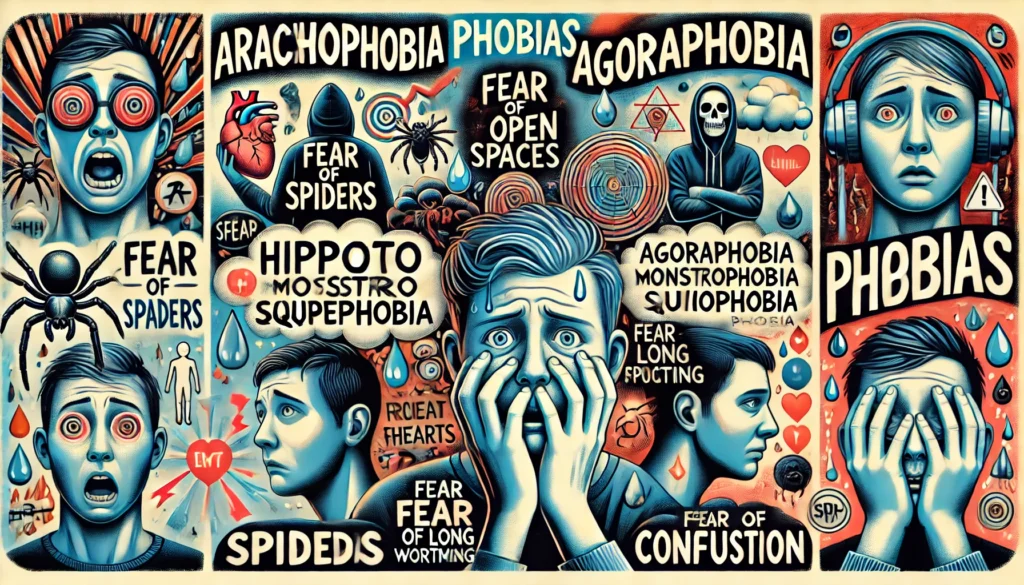Facing the Fear of Long Words: Understanding and Overcoming Phobias
Phobias are more than just strong dislikes or discomforts; they are intense, irrational fears that can significantly disrupt everyday functioning. These fears can be specific, such as a fear of spiders (arachnophobia), or more generalized, like a fear of open spaces (agoraphobia). Among these, the fear of long words, or hippopotomonstrosesquippedaliophobia, ironically stands out not just for its length but for its impact on those who suffer from it. Understanding phobias requires recognizing that they are deeply embedded in the psyche and typically arise from a mix of genetic predisposition, brain chemistry, and life experiences.

Phobias often manifest during childhood and, if untreated, can persist into adulthood, causing significant distress. For individuals with a fear of long words, everyday encounters with complex language—such as academic texts or legal documents—can trigger anxiety. This phobia can limit a person’s educational and professional opportunities, affecting their quality of life. It’s crucial to identify these fears early and understand their origins, which can often be traced back to a particularly embarrassing or confusing moment when encountering complex words during formative years.
Recent studies suggest that about 19 million Americans suffer from one or more phobias. The prevalence of phobias underscores the need for increased awareness and effective treatment strategies. While less common, the fear of long words can be particularly challenging due to the ubiquitous nature of language and text in daily life. Acknowledging the severity of this phobia is the first step toward managing it.
The physiological response to phobias can be as severe as the emotional distress they cause. When confronted with the object of their phobia, individuals may experience rapid heartbeat, excessive sweating, and a fight-or-flight response—a throwback to more primitive times when such reactions could be life-saving. In the case of hippopotomonstrosesquippedaliophobia, even seeing a long word in a book or hearing one in conversation can elicit these responses.
The cognitive aspect of phobias involves the patterns of thinking that perpetuate the fear. People with a fear of long words might begin to avoid reading altogether, which only reinforces the phobia by not challenging the fear. Cognitive Behavioral Therapy (CBT), which involves exposure to and restructuring of thoughts about the phobic stimulus, has been shown to be particularly effective in treating phobias by breaking this cycle of avoidance and fear reinforcement.
Treatment Strategies for Phobias
Treatment for phobias has evolved significantly over the years, with a variety of effective approaches now available. Cognitive Behavioral Therapy (CBT) is among the most widely used and effective treatments. CBT works by challenging and changing unhelpful cognitive distortions and behaviors, improving emotional regulation, and developing personal coping strategies that target solving current problems. For someone with a fear of long words, CBT might involve gradual exposure to longer and more complex words in a controlled, supportive environment.
Exposure therapy, a subset of CBT, is particularly useful for treating specific phobias. This therapeutic approach involves gradual and repeated exposure to the fear object or context without any danger, to help reduce the fear over time. In practical terms, this could mean slowly introducing longer words into reading exercises, or learning and practicing complex words in a therapeutic setting.
Another promising approach is the use of virtual reality (VR) technology, which allows for controlled exposure to phobic stimuli in a safe, virtual environment. This can be an effective tool for individuals who might be overwhelmed by real-world exposure initially. For example, VR can simulate situations where the individual encounters long words in various contexts, helping them become desensitized to their fear in a manageable way.
Pharmacotherapy can also be an option, particularly for those whose phobias cause severe anxiety or hinder their ability to function daily. Medications such as anti-anxiety drugs or antidepressants can help manage the symptoms of phobias. However, medication is generally recommended as a short-term solution or as a complement to other therapies rather than a standalone treatment.
Support groups and therapy groups provide peer support and are invaluable resources for those struggling with phobias. Sharing experiences and strategies for coping with fears in a group setting can reduce feelings of isolation and stigma, and provide encouragement and insight from others who understand what it’s like to live with a phobia.
Integrating Technology and Therapy
The integration of technology into therapeutic practices offers new avenues for treating phobias. Online therapy platforms like Lumende make psychological support accessible to those who might otherwise avoid seeking help due to their phobias. For individuals with a fear of long words, receiving therapy in the comfort of their own home can be a less daunting first step toward recovery.
Apps designed to aid with CBT provide tools for individuals to manage their anxiety and track their progress outside of therapy sessions. These apps can include exercises for practicing exposure to phobic stimuli, relaxation techniques, and cognitive restructuring exercises. They empower users to take an active role in their treatment, reinforcing the skills learned in therapy sessions on a daily basis.
Teletherapy has also made it possible for continuous support through messaging and virtual check-ins, which can be crucial for someone dealing with intense phobic reactions. This constant availability helps maintain the momentum of therapy and provides a safety net for individuals as they work through their phobias.
Moreover, online resources, including forums and educational websites, can offer additional information and community support, which can be especially beneficial for those feeling isolated due to their fears. These resources provide valuable insights not only into managing the phobia but also into understanding the latest research and treatment options available.
The future of phobia treatment is likely to see more personalized, tech-integrated therapy solutions that cater to individual needs and preferences, making effective treatment more accessible and less intimidating for all sufferers.

 English
English
 Deutsch
Deutsch Français
Français